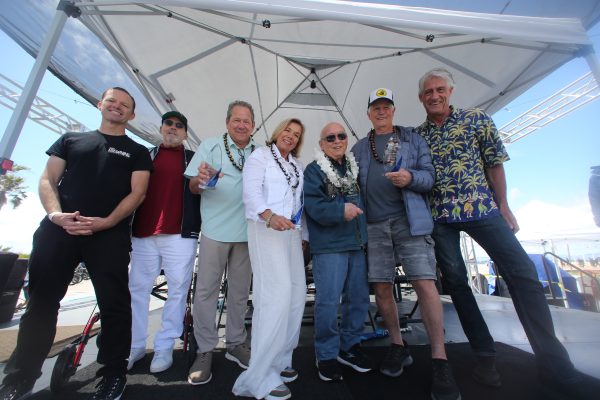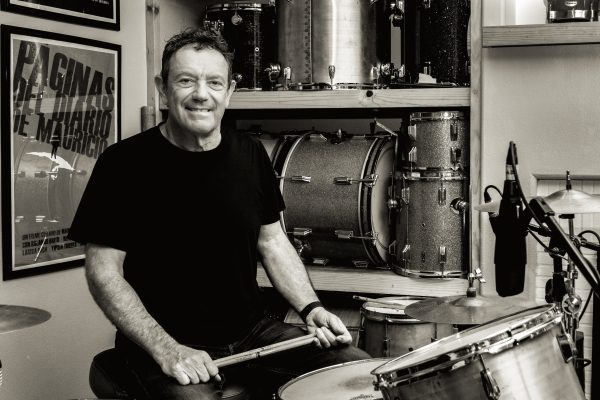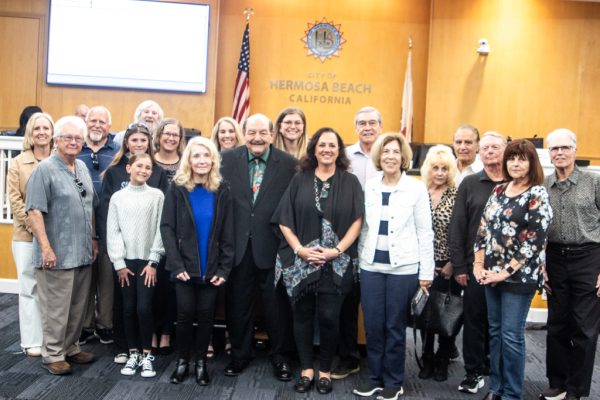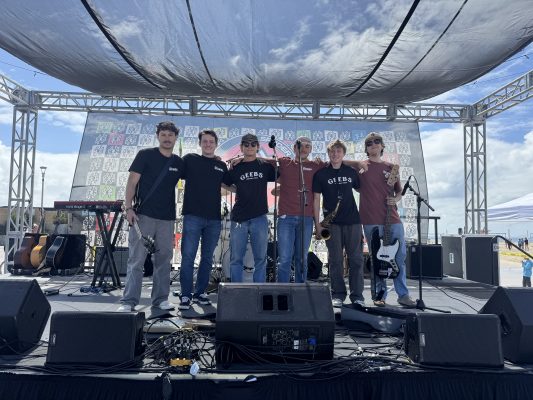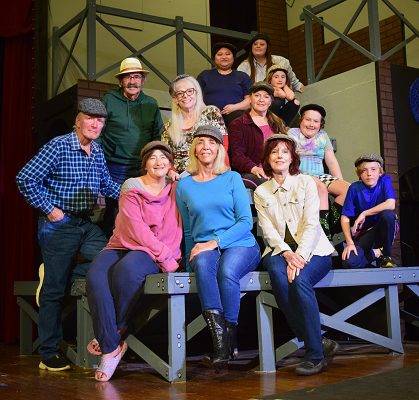
Che-Hang Charles Ih followed a fascination with space and the skies to an award-winning career as an innovator at JPL and Boeing
Che-Hang Charles Ih of Rancho Palos Verdes has always been looking up.
He looked up to his father, a war hero who survived numerous high-risk missions through the skies as a bomber pilot. He looked up in awe at the astronautic feats and astronomic wonders that prompted him to an award-winning career as an innovator and inventor for JPL and then Boeing Co. And he looks toward Heaven in other activities close to his heart, such as teaching and singing the Gospel.
An associate technical fellow for Boeing’s Space & Intelligence Systems, Ih (pronounced “Eee”), 59, was recently presented with a rare Special Invention Award – one of three in his career – for his breakthrough method of predicting the performance of large communications antennas when they are deployed in space.
Ih’s “dynamic modeling technique” produces computer-generated high-fidelity models that let engineers precisely predict the performance of a satellite’s antenna deployment.
Boeing officials said Ih’s work has had far-reaching impacts on winning and executing satellite contracts.
And just this month, Ih represented Boeing to win the 2012 Science Spectrum Magazines Minorities in Research Science (MIRS) Professional Achievement Award.
The highly competitive and prestigious national award recognizes significant achievements in engineering, science or technology, in industry or government. The selection committee looks at the body of work of the nominee, the broad social and economic impact of the career, and the nominee’s performance as a role model and mentor for minorities in technology.
When Ih was nominated by Boeing in August 2011, company officials said his outstanding skills, expertise and knowledge play an important role in the advancement of Boeing.
A hero father
One of Ih’s early inspirations was his father, who went into the Chinese air force at age 18 and, following the bombing of Pearl Harbor, flew B-24s and B-25s in training in the United States, aiming to join a Chinese and American mixed bomber wing. However, the war ended before Ih’s father finished his training.
After World War II, Ih’s father returned to China and flew missions in more than 100 battles in the civil war between 1946 and 1949.
“More than 70 percent of his classmates died in their 20s,” Ih said. “He was a true hero with many medals.”
The pilot narrowly escaped death three times, once when his plane was hit and he sputtered back to his base leaking fuel, only to find his landing gear stuck. He glided to the ground for a rough landing, suffered injuries from the impact, and found himself in the care of a “special nurse” as he recovered.
“She turned out to be my mom,” Ih said.
In time Ih’s father and mother, who achieved the ranks of Air Force lieutenant colonel and captain, retreated separately to Taiwan, where they immediately reunited.
“I was fascinated by aviation and space ever since childhood,” Ih said. “I liked to watch planes take off and land. It looked awesome to me.”
As a high school student, Ih was fascinated by farther reaches of space, following along as NASA astronauts reached the moon.
“Since high school I knew I wanted to come to the U.S. for advanced degrees and to get into the aerospace field,” he said.
Ih worked hard, earning a bachelor’s degree in mechanical engineering from National Cheng Kung University in Taiwan in 1974.
He came to the U.S. with a full scholarship, earned a master’s degree in mechanical engineering from Northwestern University in 1979, and a doctorate in control engineering from UCLA in 1985.
He got straight A’s at UCLA, and actually made money while he went to school due to the excess of the scholarship.
To space
Ih worked at Jet Propulsion Laboratory (JPL) in Pasadena from 1982 to 1996, playing a significant role in the advanced research of space shuttle flight experiments, dynamic modeling and control of space station, space manipulator arms, space reflector telescope and any large space structures.
His work on shuttle experiments and space station modeling, control and analysis – including station assembly, shuttle docking, astronaut motion and the management of payloads – laid an important foundation for the work that continues at NASA , as evidenced by the numerous references to his publications.
Those advancements, he mused, are now dated.
“Now we have much more sophisticated design” to accomplish the same goals, he said.
Ih also worked on the design and analysis of the control system for the Galileo spacecraft, which was launched via space shuttle, and then orbited and studied Jupiter, its moons and magnetosphere for eight years.
Galileo scientists got a direct view of the impact of Comet Shoemaker-Levy 9 fragments on Jupiter, and the mission’s discoveries including evidence of water in liquid form under the surface of the icy moon Europa, and a helium concentration in Jupiter similar to that of the sun, according to NASA.
Ih’s work in part resulted in “all those beautiful pictures” of that corner of space, which were transmitted back to Earth, for the benefit of scientists as well as an inspired public.
On the D-day – Dec. 7, 1995 – of Galileo’s successful Probe Relay and Jupiter Orbit Insertion, Ih was interviewed by six Chinese TV stations and news agencies to introduce the Galileo mission. The interview reached Chinese communities worldwide through TV, newspapers and the internet.
By this time Ih was becoming extensively published in the scientific community and had been sent by JPL to Germany to make a presentation at an international conference. It would not be the last time he would present before international colleagues.
He joined Boeing, which was then Hughes Aircraft, in 1996 and has developed several pioneering designs used throughout the space fleet.
Although the details of his proprietary work are not publicized, people can gaze to space and give Ih a nod of thanks when they use their cell phones and watch their TVs, and their signals are clear and strong.
Earth-orbiting antennas that are much larger than their predecessors are “becoming a 21st-century trend,” said Ih, whose accomplishments contribute greatly to their successful deployment.
Ih joined the American Institute of Aeronautics and Astronautics (AIAA) in 1981, and became a member of the AIAA Modeling and Simulation Technical Committee in 2008, a competitively selected position.
Ih and his committee have advanced the capabilities of aerospace modeling and simulation by organizing international conferences, issuing newsletters, reporting on modeling and simulation capabilities and tools, and advising industries and academic and research institutes during technical exchange tours.
He became a prestigious associate fellow of the AIAA in 2010, and an associate technical fellow of Boeing in 2004.
He has more than 40 publication credits in scientific journals and conference literature, and has received 10 NASA awards for technical innovation along with numerous other NASA and JPL awards.
His inventions for Boeing have received seven U.S. patents. Besides the three Special Invention Awards, he has received many other prestigious awards from Boeing.
He has taught advanced spacecraft topics at the UCLA extension and gave expert guidance to UC Davis students in their “Mission to Mars” project in 2004.
In 1996 Ih was invited to introduce presentations of the Galileo mission at the Chinese-American Engineers and Scientists Association of Southern California, and received the outstanding speaker award.
Toward Heaven
When he’s not hard at work, Ih likes to hike with his family – his wife Ming, who works as a controller, and daughters Grace and Irene, who graduated from UC Davis and UC Santa Barbara and work at Cedars Sinai Hospital and Wells Fargo Bank, respectively – and would like to tackle the Swiss Alps perhaps next year.
He also has taught Bible for more than 10 years across the Chinese Catholic community in Southern California, and spreads the good word with his singing group “The Flying Seeds,” in which he arranges the songs, plays guitar and sings.
The group’s name comes from the image of a seed as it begins to sprout into a plant, which can look like a music note.
“The notes fly on the air like seeds and fly from our mouths, singing of Christ’s love and peace into people’s hearts,” he said.
The group performs voluntarily wherever it can be helpful – nursing homes, community gatherings, weddings, funerals, Christmas caroling – “to all races, all ages,” Ih said.
In June 2010 The Flying Seeds sang in front of 600 people at their folk concert, mixing folk songs with devotional songs, many of which are firmly embedded in the American folk lexicon, and touched the hearts of many.
Between Heaven, mountain hikes and the far reaches of space, Ih’s attention continues to be drawn upward. PEN


